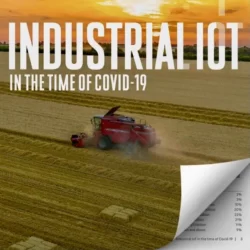Rita McGrath, author of Seeing Around Corners: ”Digitalization is a step-by-step process”

How can companies recognize so-called inflection points in their business? In her book titled Seeing Around Corners, Professor Rita McGrath explains how executives can anticipate major changes for their organizations, and how a distributor in the metal industry has looked ahead and digitalized its supply chains. The book does not specifically cover COVID-19, but Supply Chain Media saw the outbreak as a good reason to interview the author.
By Martijn Lofvers
Various paradigmatic shifts or ‘inflection points’ have occurred in the business landscape over the years, with the coronavirus pandemic being the most recent example. Last September, Rita McGrath, a professor at the Columbia Business School in New York, published her latest book titled Seeing Around Corners. How to Spot Inflection Points in Business. Supply Chain Media interviewed her remotely to discuss the changes in the world and how companies can anticipate them.
Did you foresee the current pandemic as a potential inflection point?
“No, I personally didn’t see this pandemic coming, but other people did – and the next pandemic is only a matter of time. COVID-19 is a major inflection point for businesses because it challenges a lot of our assumptions. It changes a lot of what we thought to be true.”
Andy Grove, the former CEO of Intel, describes a crisis as an opportunity. Does that hold true for COVID-19 too?
“This crisis is definitely an opportunity. People tend to react in one of three ways. Some of them just stop what they’re doing and crawl under a rock. Others try all kinds of things in all kinds of directions. And then there are people who think about where we are and what we can do to move on. They are the ones who create better opportunities for the future.”
Andy Grove is quoted as saying that snow melts from the edges. Where do companies need to look in order to spot inflection points?
“Many companies are blinded by the statistics from their own industry, but they need to look at the complete arena they operate in – the entire competitive ecosystem and their role in it. In my book, I explain eight ways to address blind spots. One of them is for leaders to actively seek out the edges and be personally exposed to them. A CEO must have a direct flow of information from the edges to his ‘corner office’. Many companies tend to look at outdated indicators, such as the quarterly financial figures. Some time ago, when an analyst congratulated Jeff Bezos on the company’s good quarterly figures, he angrily replied that the figures were the result of decisions made four years earlier.”
Your book features Klöckner, the German metal and steel distributor. How did their supply chain digitalization process start?
“Gisbert Rühl, the company’s CEO, recognized years ago that the world was full of digital platforms and that the company’s supply chains were inefficient and not customer-friendly. He wanted to become the Amazon of the steel world. That means taking a number of small steps; you have to learn a new way of doing things. Klöckner have not only digitalized all their supply chains, but have also completely overhauled their whole business model. Instead of just making margins on materials, they have opened the door to advanced services utilizing their technical expertise. Klöckner didn’t start with a ‘big bang’ but proceeded step by step, the first of which was to move away from receiving orders by fax.”
 What type of leadership does the current crisis call for?
What type of leadership does the current crisis call for?
“Companies currently need discovery-driven leadership. You now have to learn a huge amount in order to know what the next step should be.”
Seeing Around Corners. How to Spot Inflection Points in Business (2019), Rita McGrath. Published by Houghton Mifflin Harcourt, 259 pages, €23.83
![]()








